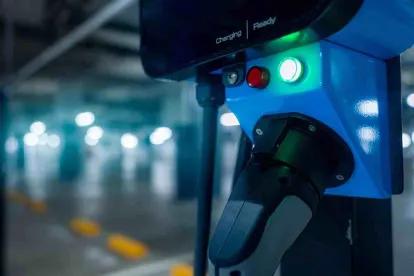On 1 December 2022, U.S. Environmental Protection Agency (EPA) proposed a major new regulatory component of the Renewable Fuel Standard program (RFS) to recognize electricity produced from biomass and used to fuel electric vehicles (the Proposed eRINs Rule).1 Industry participants have waited on the Proposed eRINs Rule for several years, and its introduction on the heels of the Inflation Reduction Act gives biogas developers yet another option when pursuing projects. EPA is soliciting public comments on the Proposed eRINs Rule until 10 February 2023. The lawyers of K&L Gates’ Power and Renewables, Environment, Land Use, and Natural Resources, and Policy and Regulatory practices are available to draft comments and help clients understand this expansion of the RFS.
The federal Energy Policy Act of 2005 authorized the Renewable Fuel Program, which amended the Clean Air Act and gave rise to the first iteration of the RFS. The Renewable Fuel Program was later expanded under the Energy Independence and Security Act of 2007 (EISA), a statute that established target renewable fuel volumes through 2022 (known as RFS2, although we will refer to both programs here as the RFS). Under the RFS, oil refiners must on an annual basis blend or replace petroleum-based transportation fuel with statutorily prescribed volumes of renewable fuels, including biomass-based diesel, cellulosic biofuel, advanced biofuel, and total renewable fuel. Starting in 2023, the EISA statutory obligations cease and the RFS is handed to EPA, which must update the annual renewable fuel volumes by 30 November of each subsequent year.
The RFS introduced a market-based compliance mechanism that requires refiners or importers to show that particular volumes of renewable fuels have been introduced into the nation’s transportation fuel mix. Demonstrating compliance with the RFS requires refiners or importers of gasoline/diesel fuel to achieve these volumetric standards by “blending” renewable fuels into their petroleum-based fuels or by obtaining credits known as Renewable Identification Numbers (RINs) that otherwise proves that renewable fuel was used as a transportation fuel. Renewable fuel producers generate RINs by producing a gallon (or gallon equivalent) of renewable fuel, such as ethanol, biodiesel, or compressed natural gas. RINs can be bought and sold by refiners, renewable fuel producers, and brokers and can ultimately be retired by obligated parties to show compliance under the RFS.
EPA’s Proposed eRINs Rule expands the program to electric vehicles (which use electricity as a transportation fuel) and has a few primary elements. First, electric vehicle manufacturers (or, potentially, renewable electricity generators and electric vehicle charging networks) may generate RINs for electric vehicles (eRINs) charged with renewable electricity sourced from renewable biomass. Second, the proposed rule increases the amount of renewable fuel that oil refiners and importers must blend with petroleum-based fuels. Finally, EPA proposed several regulatory and recordkeeping adjustments, including specifying that in certain circumstances biomethane producers should be RIN producers.
ERIN PROPOSAL
The Clean Air Act’s RFS requires renewable fuels to be (1) produced from renewable biomass and (2) used for transportation. Under the Proposed eRIN Rule, opt-in parties would be able to generate eRINs from electricity produced from qualifying renewable biomass and used as transportation fuel.
EPA’s preferred method for calculating eRIN generation would use contractual relationships between renewable electricity generators and electric vehicle manufacturers (also known as original equipment manufacturers, or OEMs) to show that renewable electricity was used as transportation fuel. Under this method, OEMs would be able to generate a quantity of eRINs representing the amount of renewable electricity used by both new and previously sold light-duty electric vehicles. The OEM would be responsible for purchasing renewable electricity from generators, and matching the quantity of renewable electricity with fleet-wide electricity consumption averages for that OEM’s vehicles. EPA also suggested alternative methods for eRIN generation, including allowing renewable electricity generators or public access charging stations to generate eRINs or using charging data from onboard vehicle telematics. EPA ultimately concluded that a top-down, OEM-driven approach simplified recordkeeping and reduced the risk of double counting, but is willing to hear further public comment on the issue.
Under EPA’s preferred approach, biogas producers would first produce biogas under existing EPA-approved pathways for biogas to electricity. Second, renewable electricity generators would either use biogas directly supplied to their electric generating units or procure renewable natural gas from the natural gas commercial pipeline system. Third, OEMs would determine the electricity consumption of their vehicles and enter contracts with renewable electricity generators for energy sufficient to cover their fleet’s in-use electricity consumption. OEMs would then be able to generate eRINs on a quarterly basis representing the lesser of either (1) the quantity of electricity used by their fleets or (2) the renewable electricity generated from renewable electricity generators under the contracts. As with the existing program, refiners, importers, and blenders could then purchase eRINs from OEMs to meet their own renewable volume obligations.
EPA’s Proposed eRINs Rule would prevent eRINs from being generated until 1 January 2024. If finalized in this form, the eRIN program would greatly expand opportunities for companies to generate or share in the economic rewards of cellulosic biofuel (D3) RINs under the RFS. Under EPA’s reasoning, providing OEMs with the opportunity to generate eRINs could potentially bring down the total cost of producing electric vehicles, incentivize OEMs to broaden their product lines, and share RFS revenue up and down the biogas-to-electricity value chain. OEMs may also start pursuing arrangements to secure long-term supplies of biogas-generated renewable electricity, which could spur the development of anaerobic digesters that are located close to power transmission but a considerable distance from interstate natural gas pipelines.
INCREASED BLENDING TARGETS
In addition to the eRIN program, in its first year of volumetric decisionmaking authority, EPA has proposed the following increased biofuel blending volume targets for 2023-2025:
-
20.82 billion gallons of renewable fuel (conventional biofuels) in 2023, increasing up to 22.68 billion in 2025.
-
5.82 billion gallons of advanced biofuel in 2023, increasing up to 7.43 billion in 2025.
-
2.82 billion gallons of biomass-based diesel in 2023, increasing up to 2.95 billion in 2025.
-
0.72 billion gallons of cellulosic biofuel in 2023, increasing up to 2.13 billion in 2025.
-
0.25 billion gallons of supplemental renewable fuels for 2023.
Overall, EPA’s Proposed eRINs Rule can be seen as a big step in the Biden Administration’s goal of decarbonization by 2050. Like previous RFS rules, which have sparked controversy between farmers and oil producers, EPA’s proposed rule could be contentious as it expands the program to many new stakeholders and will surely add a layer of complexity to the burgeoning biogas and renewable natural gas markets. Those who are currently subject to the RFS and the many new players who may benefit, including OEMs, agricultural concerns, and municipalities, are encouraged to pay close attention to EPA’s rulemaking process.
EPA is soliciting public comments until 10 February 2023, and will hold workshops on January 10 and (possibly) January 11, 2023. The lawyers of K&L Gates’ Power and Renewables, Environment, Land Use, and Natural Resources, and Policy and Regulatory practices are available to draft comments and help clients understand this expansion of the RFS and its impact on the power and transportation fuels sectors.
FOOTNOTES
1 https://www.epa.gov/system/files/documents/2022-12/rfs-set-rule-nprm-2022-11-30.pdf







 />i
/>i
